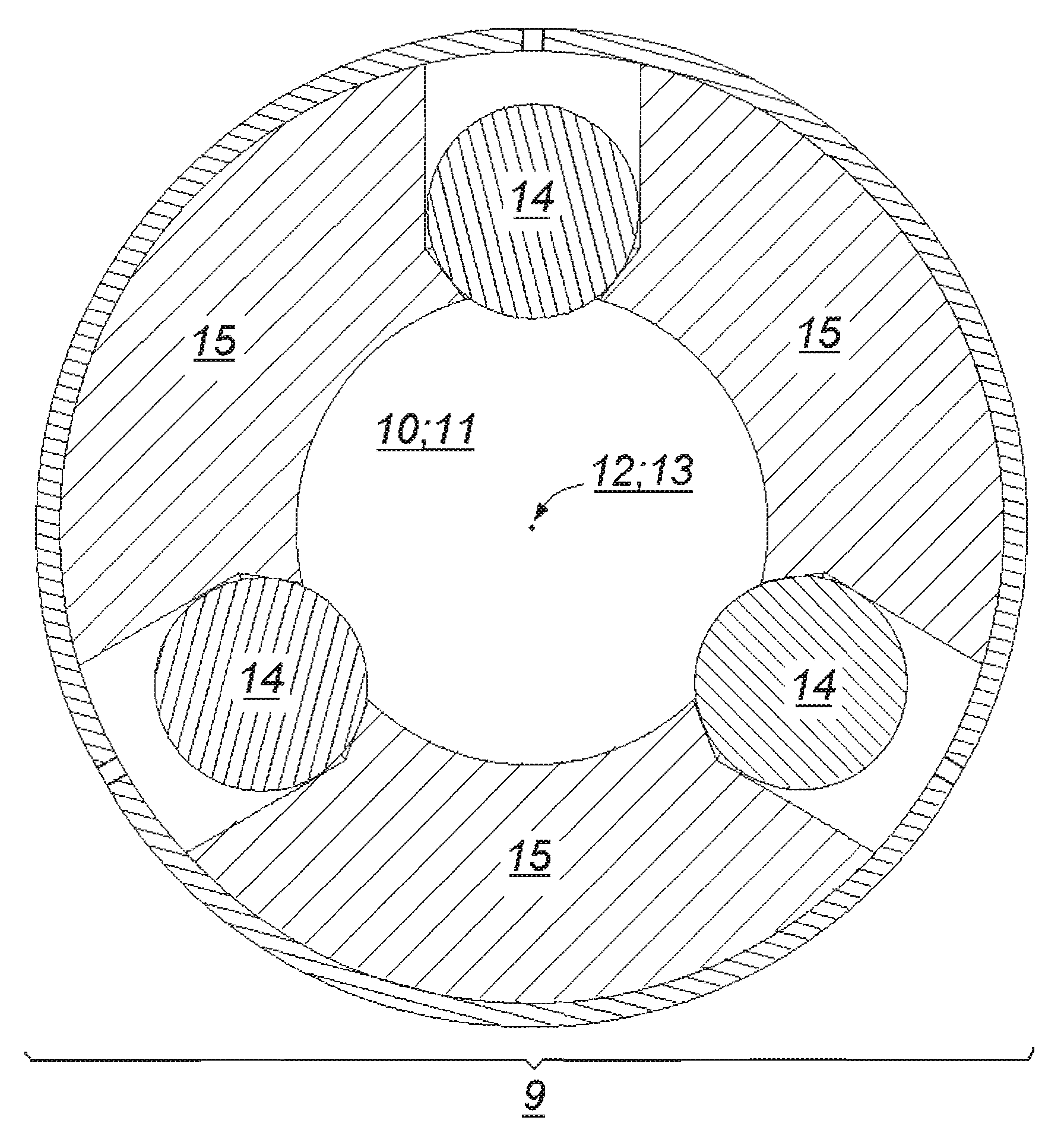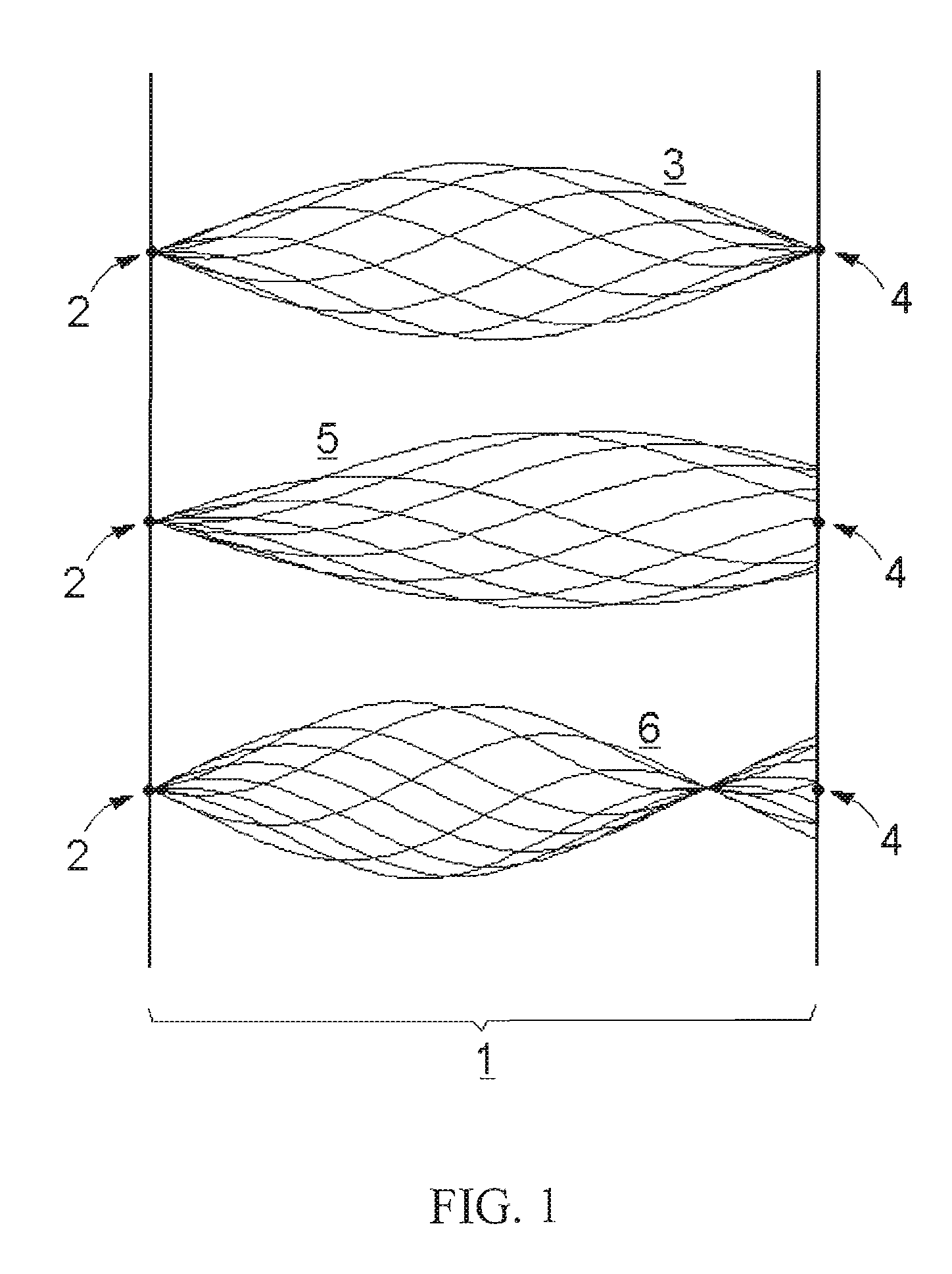Method and apparatus to produce steady beams of mobility selected ions via time-dependent electric fields
a technology of electric field and apparatus, applied in the field of apparatus and method to select ions, can solve the problems of difficult to analyze simple ms techniques, difficult to evaluate complex samples, and difficult to analyze big proteins by simple ms techniques, etc., and achieve the effect of efficient transfer
- Summary
- Abstract
- Description
- Claims
- Application Information
AI Technical Summary
Problems solved by technology
Method used
Image
Examples
Embodiment Construction
[0058]In a steady electric field, all ions follow the field lines and cannot therefore be separated in space. They can however be separated in time because they move with different speeds according to their mobility. This is indeed the phenomenon used in ion mobility spectrometers (IMS) of the time of flight type.
[0059]To separate the different ions from each other in space it is necessary to introduce a new variable that allows the shape of the ion trajectories to be dependent on the mobility of said ions. In a DMA the new variable is the fluid velocity. This can be more formally interpreted via dimensional analysis of the ordinary differential equations (ODEs) governing the movement in a DMA. The trajectories in a DMA depend on the electric to fluid speed ratio. The trajectories are uniquely defined for ions of a given mobility if ions entering the DMA through the same inlet. And therefore, ions can be geometrically separated according to said dimensionless ratio. The selected ion...
PUM
 Login to View More
Login to View More Abstract
Description
Claims
Application Information
 Login to View More
Login to View More - R&D
- Intellectual Property
- Life Sciences
- Materials
- Tech Scout
- Unparalleled Data Quality
- Higher Quality Content
- 60% Fewer Hallucinations
Browse by: Latest US Patents, China's latest patents, Technical Efficacy Thesaurus, Application Domain, Technology Topic, Popular Technical Reports.
© 2025 PatSnap. All rights reserved.Legal|Privacy policy|Modern Slavery Act Transparency Statement|Sitemap|About US| Contact US: help@patsnap.com



